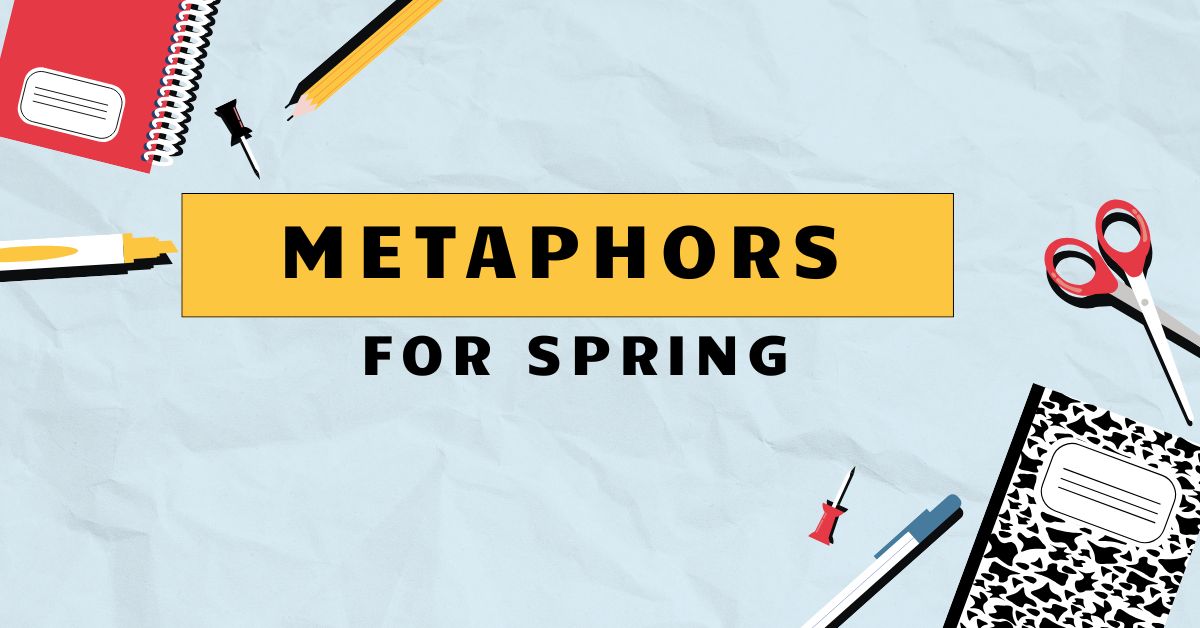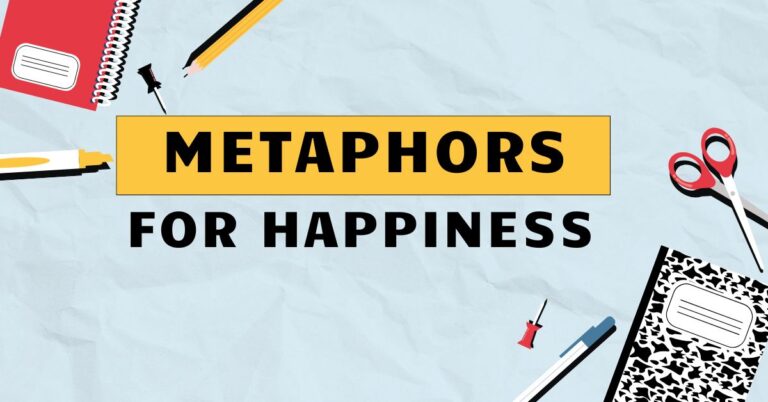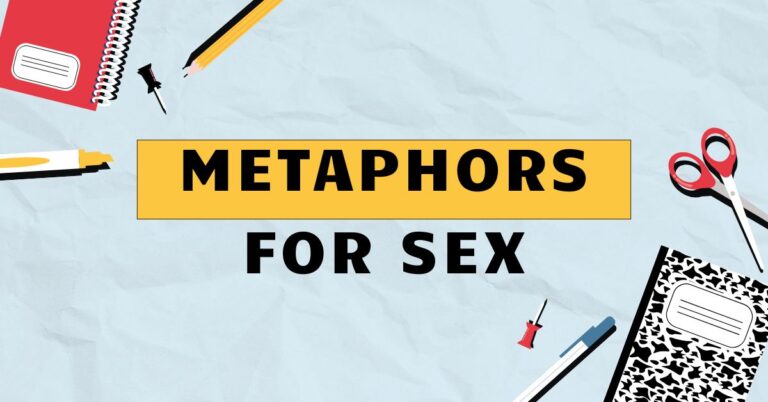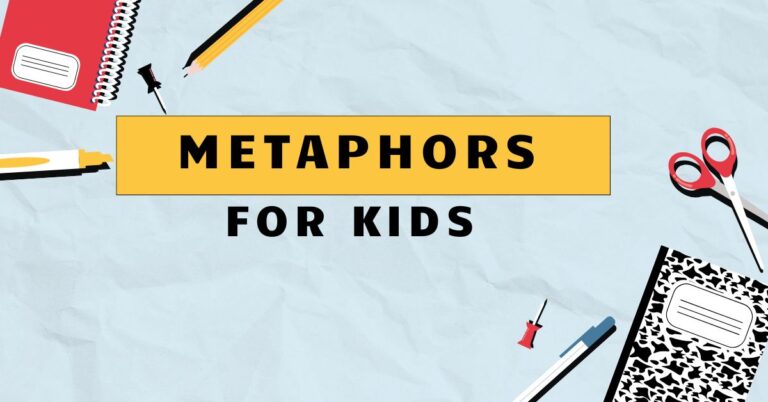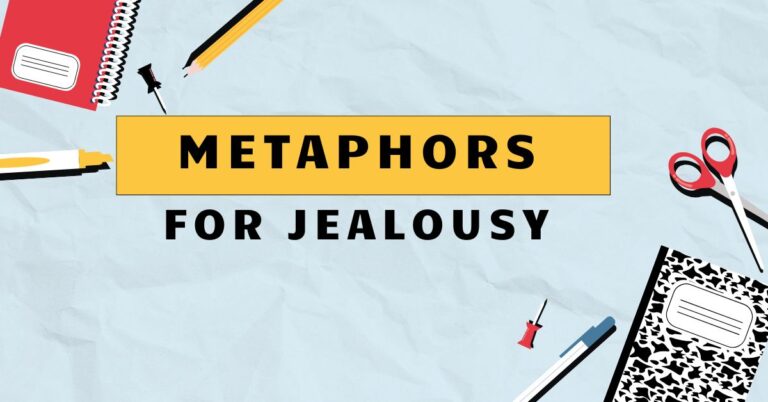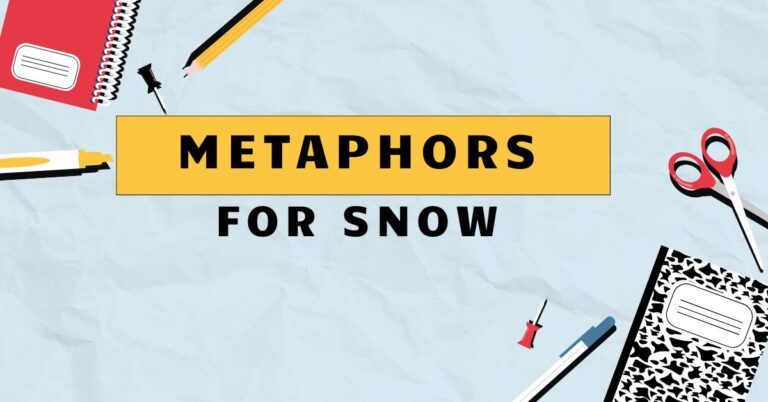43 Metaphors for Spring: Understanding Figurative Language
Spring, a season of renewal and rebirth, frequently inspires rich and evocative language. Understanding metaphors related to spring enhances our ability to interpret literature, poetry, and everyday conversations.
This article delves into the world of spring metaphors, exploring their definition, structure, types, and usage. Whether you’re an English language learner, a student of literature, or simply someone who appreciates the beauty of language, this comprehensive guide will equip you with the knowledge and skills to recognize, understand, and appreciate the power of spring metaphors.
We will examine how these metaphors function within the broader context of English grammar and figurative language. By analyzing diverse examples and providing practical exercises, this article aims to solidify your grasp of this essential linguistic concept.
Prepare to explore the vibrant and symbolic landscape of spring through the lens of metaphorical language.
Table of Contents
- Introduction
- Definition of Metaphor
- Classification of Metaphors
- Function of Metaphors in Language
- Contexts for Using Metaphors
- Structural Breakdown of Metaphors
- Tenor and Vehicle
- Implied Metaphors
- Extended Metaphors
- Types and Categories of Spring Metaphors
- Rebirth and Renewal Metaphors
- Growth and Blooming Metaphors
- Light and Warmth Metaphors
- Youth and Innocence Metaphors
- Examples of Spring Metaphors
- Rebirth and Renewal Examples
- Growth and Blooming Examples
- Light and Warmth Examples
- Youth and Innocence Examples
- Usage Rules for Metaphors
- Appropriateness and Clarity
- Avoiding Clichés
- Avoiding Mixed Metaphors
- Common Mistakes with Metaphors
- Literal Interpretation
- Overuse of Metaphors
- Practice Exercises
- Exercise 1: Identifying Metaphors
- Exercise 2: Creating Metaphors
- Exercise 3: Analyzing Metaphors
- Advanced Topics in Metaphorical Language
- Cognitive Metaphor Theory
- Metaphor in Poetry
- Metaphor in Rhetoric
- Frequently Asked Questions
- Conclusion
Definition of Metaphor
A metaphor is a figure of speech that directly compares two unlike things without using “like” or “as.” It asserts that one thing is another, creating a relationship based on shared characteristics or qualities. Metaphors are powerful tools for enhancing understanding, evoking emotions, and adding depth to language.
Unlike similes, which use explicit comparison words, metaphors make implicit comparisons. This implicit nature often requires the reader or listener to engage in a deeper level of interpretation to grasp the intended meaning.
This engagement is what makes metaphors so effective and memorable.
Classification of Metaphors
Metaphors can be classified in several ways, including:
- Standard Metaphors: These are commonly recognized and understood metaphors, such as “time is money.”
- Novel Metaphors: These are original and creative metaphors that have not been widely used before.
- Dead Metaphors: These are metaphors that have become so common that they are no longer recognized as figurative language, such as “the leg of a table.”
- Mixed Metaphors: These are combinations of two or more incompatible metaphors, often creating a confusing or humorous effect.
Function of Metaphors in Language
Metaphors serve several important functions in language:
- Enhancing Understanding: They can make complex or abstract concepts more understandable by relating them to something familiar.
- Evoking Emotions: They can create vivid images and evoke strong emotions in the reader or listener.
- Adding Depth: They can add layers of meaning to language, making it more interesting and engaging.
- Persuasion: They can be used to persuade or influence others by framing an issue in a particular way.
Contexts for Using Metaphors
Metaphors are used in a wide variety of contexts, including:
- Literature: Poets and writers use metaphors extensively to create rich and evocative imagery.
- Everyday Conversation: We use metaphors in everyday conversation to express ourselves more vividly and creatively.
- Public Speaking: Speakers use metaphors to engage their audience and make their message more memorable.
- Business and Marketing: Metaphors are used to create compelling brand narratives and marketing campaigns.
Structural Breakdown of Metaphors
Understanding the structure of a metaphor is essential for analyzing its meaning and effectiveness. Key elements include the tenor, vehicle, and ground.
Tenor and Vehicle
Thetenoris the subject of the metaphor, the thing being described. Thevehicleis the object or concept that is used to describe the tenor.
For example, in the metaphor “Spring is a green wave,” “spring” is the tenor and “a green wave” is the vehicle.
The relationship between the tenor and vehicle is crucial. The vehicle should illuminate some aspect of the tenor, providing a new perspective or understanding.
The effectiveness of a metaphor depends on the strength and relevance of this relationship.
Implied Metaphors
An implied metaphor does not explicitly state the tenor. Instead, it suggests the comparison through actions or descriptions associated with the vehicle.
For instance, instead of saying “He roared his disapproval,” which is a more direct metaphor, one might say, “His voice shook the rafters,” implying that his voice was like a roar without directly stating it.
Implied metaphors can be more subtle and require greater interpretive effort from the reader. However, they can also be more powerful and evocative due to their indirectness.
Extended Metaphors
An extended metaphor is a metaphor that is developed over several lines or even throughout an entire work. It involves multiple points of comparison between the tenor and the vehicle, creating a more complex and nuanced understanding.
Extended metaphors are often used in poetry and literature to explore a theme or idea in depth. They can be incredibly effective in creating a lasting impression on the reader.
Types and Categories of Spring Metaphors
Spring metaphors often fall into distinct categories based on the aspects of spring they emphasize. These categories include rebirth and renewal, growth and blooming, light and warmth, and youth and innocence.
Rebirth and Renewal Metaphors
These metaphors highlight spring as a time of new beginnings and fresh starts. They often involve imagery of emerging life, resurrection, and transformation.
They evoke a sense of hope and optimism.
Examples include: “Spring is the earth’s resurrection,” “Spring is a second chance,” and “Spring is the awakening of the world.” These metaphors emphasize the cyclical nature of life and the promise of renewal after a period of dormancy.
Growth and Blooming Metaphors
These metaphors focus on the burgeoning life and vibrant colors of spring. They often involve imagery of flowers blooming, trees budding, and plants growing.
They celebrate the abundance and fertility of the season.
Examples include: “Spring is a symphony of blossoms,” “Spring is a green explosion,” and “Spring is the earth’s fertile embrace.” These metaphors emphasize the dynamic and energetic nature of growth and the beauty of blossoming life.
Light and Warmth Metaphors
These metaphors emphasize the increasing sunlight and warmth that characterize spring. They often involve imagery of the sun shining, days lengthening, and temperatures rising.
They symbolize hope, clarity, and energy.
Examples include: “Spring is the sun’s gentle kiss,” “Spring is a warm embrace,” and “Spring is the light returning to the world.” These metaphors emphasize the life-giving power of light and warmth and their ability to dispel the darkness and cold of winter.
Youth and Innocence Metaphors
These metaphors associate spring with the qualities of youth, innocence, and new beginnings. They often involve imagery of newborn animals, fresh greenery, and childlike wonder.
They evoke a sense of purity and potential.
Examples include: “Spring is the childhood of the year,” “Spring is innocence reborn,” and “Spring is a time of youthful exuberance.” These metaphors emphasize the freshness and vitality of spring and its association with new life and uncorrupted beauty.
Examples of Spring Metaphors
The following tables provide examples of spring metaphors categorized by type, illustrating the diverse ways in which this season can be described figuratively.
Rebirth and Renewal Examples
This table shows examples of spring metaphors related to the theme of rebirth and renewal. These metaphors often invoke images of resurrection, awakening, and fresh starts.
| Metaphor | Explanation |
|---|---|
| Spring is the earth’s resurrection. | Compares spring to the rising from the dead, symbolizing new life. |
| Spring is a second chance. | Suggests spring offers an opportunity to start over and make amends. |
| Spring is the awakening of the world. | Implies that the world is coming out of a long sleep. |
| The thaw is a baptism of the land. | Compares the melting of snow to a cleansing ritual, symbolizing purification. |
| April is nature’s reset button. | Presents April as a chance to start fresh and correct past mistakes. |
| The first buds are a promise of life. | Portrays the emergence of buds as a guarantee of future growth and vitality. |
| Spring is the planet’s exhale after a long winter. | Compares spring to a relieving breath after a period of restriction. |
| The green shoots are whispers of hope. | Suggests that the newly emerging plants carry a message of optimism. |
| Spring is a tapestry woven with new beginnings. | Presents spring as a collection of fresh starts coming together. |
| The returning birds are heralds of a new era. | Compares the migrating birds to messengers announcing a new age. |
| Spring is the world shedding its winter skin. | Implies that the world is transforming and leaving behind its old self. |
| The blooming flowers are nature’s smile. | Compares the act of blossoming to a happy expression, symbolizing joy. |
| Spring is the earth’s reawakening from slumber. | Suggests that the earth has been asleep and is now coming back to life. |
| The melting snow is a symbol of letting go. | Portrays the thaw as a release of the past and an embrace of the future. |
| Spring is a symphony of rebirth. | Compares the season to a harmonious blend of new life emerging. |
| The first rain is a cleansing shower. | Implies that the rain is washing away the old and preparing for the new. |
| Spring is the earth writing a new chapter. | Suggests that the earth is beginning a new phase in its story. |
| The sprouting seeds are dreams taking root. | Compares the germination of seeds to the realization of hopes and aspirations. |
| Spring is nature’s way of saying, “Let’s start over.” | Presents the season as an invitation to begin again and leave the past behind. |
| The emerging leaves are flags of a new beginning. | Compares the new growth to banners signaling a fresh start. |
| Spring is the Earth’s great unveiling. | Suggests that the Earth is revealing its beauty after being hidden. |
| The gentle breeze is a whisper of renewal. | Implies that the wind carries a message of rebirth and hope. |
| Spring is the sun’s promise kept. | Presents the season as the fulfillment of the Sun’s pledge of warmth and light. |
| The chirping birds are a chorus of rebirth. | Compares the birds’ songs to a harmonious celebration of new life. |
Growth and Blooming Examples
This table features metaphors that focus on the vibrant growth and blooming that occur during spring. These metaphors often involve rich imagery of flowers, trees, and plants.
| Metaphor | Explanation |
|---|---|
| Spring is a symphony of blossoms. | Compares spring to a harmonious musical piece filled with blooming flowers. |
| Spring is a green explosion. | Suggests a rapid and abundant growth of greenery. |
| Spring is the earth’s fertile embrace. | Implies that the earth is nurturing and supporting new life. |
| The trees are dressed in emerald gowns. | Presents the trees as wearing beautiful, green clothing. |
| The garden is a riot of color. | Suggests a vibrant and chaotic display of various hues. |
| The flowers are nature’s jewels. | Compares the flowers to precious and beautiful gems. |
| Spring is a painter’s canvas, splashed with vibrant hues. | Presents spring as a work of art filled with bright colors. |
| The buds are nature’s tightly closed fists, ready to unleash their beauty. | Implies that the buds are holding back their beauty until the right moment. |
| Spring is a verdant tapestry woven with life and color. | Suggests that spring is a rich and intricate work of art. |
| The grass is a velvet carpet underfoot. | Compares the grass to a soft and luxurious covering. |
| Spring is the season when the earth wears its finest clothes. | Implies that the earth is adorned with beautiful greenery and flowers. |
| The blossoms are sweet-smelling promises of fruit to come. | Suggests that the flowers are a guarantee of future bounty. |
| Spring is the Earth’s exuberant dance. | Compares the season to a joyful and lively performance. |
| The fields are a sea of waving green. | Presents the fields as a vast and moving expanse of grass. |
| Spring is the earth’s jewelry box, overflowing with colorful gems. | Implies that the earth is filled with precious and beautiful flowers. |
| The vines are nature’s embrace, clinging to the trees. | Suggests that the vines are lovingly holding onto the trees. |
| Spring is a green waterfall cascading down the mountainsides. | Compares the season to a flowing and abundant source of life. |
| The trees are reaching for the sky with newborn arms. | Presents the trees as actively growing and striving for sunlight. |
| Spring is the earth’s song, sung in the language of flowers. | Implies that the season is a beautiful and expressive melody. |
| The meadows are a quilt of wildflowers. | Compares the meadows to a colorful and varied patchwork of flowers. |
| Spring is the Earth unfurling its vibrant banner. | Suggests the season is a bold declaration of life. |
| The leaves are emerald coins, adorning nature’s treasury. | Presents the leaves as valuable and beautiful additions to the landscape. |
| Spring is a green tide washing over the land. | Compares the growth of vegetation to a powerful and unstoppable force. |
| The forest floor is a carpet of newly sprouted life. | Implies that the ground is covered with a soft and vibrant layer of new plants. |
Light and Warmth Examples
This table provides examples of metaphors that emphasize the increasing light and warmth that define spring. These metaphors often symbolize hope, clarity, and energy.
| Metaphor | Explanation |
|---|---|
| Spring is the sun’s gentle kiss. | Compares the warmth of the sun to a loving touch. |
| Spring is a warm embrace. | Suggests a comforting and welcoming feeling. |
| Spring is the light returning to the world. | Implies that the darkness of winter is being replaced by brightness. |
| The sun is a golden artist, painting the landscape with warmth. | Presents the sun as creating a beautiful and vibrant scene. |
| Spring is the earth thawing under the sun’s loving gaze. | Suggests that the earth is responding to the sun’s affection. |
| The days are stretching like lazy cats in the sun. | Compares the lengthening days to relaxed and contented felines. |
| Spring is the world awakening to the sun’s golden call. | Implies that the world is responding to the sun’s invitation to life. |
| The warmth is a gentle hand, coaxing life from the frozen ground. | Suggests that the warmth is encouraging plants to grow. |
| Spring is a beacon of hope, shining through the winter’s gloom. | Presents spring as a guiding light in a dark time. |
| The sunlight is a river of gold, flowing across the land. | Compares the sunlight to a valuable and precious resource. |
| Spring is the earth drinking in the sun’s life-giving rays. | Implies that the earth is absorbing the sun’s energy. |
| The air is filled with the sun’s laughter. | Suggests that the atmosphere is joyful and vibrant. |
| Spring is the Earth’s radiant smile. | Compares the season to a happy and cheerful expression. |
| The sunbeams are golden threads weaving through the trees. | Presents the sunlight as intricate and beautiful. |
| Spring is a sun-kissed melody, played on the strings of nature. | Implies that the season is a harmonious and beautiful tune. |
| The warmth is a gentle blanket, covering the earth. | Suggests that the warmth is providing comfort and protection. |
| Spring is the sun’s golden brushstroke on the canvas of the world. | Compares the season to a beautiful and artistic addition. |
| The days are growing bolder, stepping out of winter’s shadow. | Presents the days as becoming more confident and assertive. |
| Spring is a sunlit promise, whispered on the breeze. | Implies that the season is a hopeful and gentle message. |
| The air is alive with the sun’s energy. | Suggests that the atmosphere is vibrant and full of life. |
| Spring is the Earth basking in the sun’s affection. | Compares the season to the Earth enjoying the sun’s love and care. |
| The sun is a life-giving elixir, rejuvenating the world. | Presents the sun as a powerful and restorative force. |
| Spring is the unveiling of the sun’s golden masterpiece. | Suggests that the season is a beautiful and artistic creation. |
| The warmth is a gentle hand, guiding life from slumber. | Implies that the warmth is encouraging plants and animals to awaken. |
Youth and Innocence Examples
This table offers metaphors that associate spring with youth, innocence, and new beginnings. These metaphors often evoke a sense of purity and potential.
| Metaphor | Explanation |
|---|---|
| Spring is the childhood of the year. | Compares spring to the early stages of life, full of potential. |
| Spring is innocence reborn. | Suggests that spring represents a fresh start, free from corruption. |
| Spring is a time of youthful exuberance. | Implies that spring is filled with energy and enthusiasm. |
| The newborn lambs are nature’s cuddly toys. | Presents the lambs as adorable and harmless creatures. |
| Spring is a playground of budding life. | Suggests that spring is a place of joy and exploration. |
| The fresh greenery is nature’s baby clothes. | Compares the new plants to soft and delicate garments. |
| Spring is the season of wide-eyed wonder. | Implies that spring is a time of amazement and discovery. |
| The young birds are singing their first songs of joy. | Suggests that the birds are expressing pure and innocent happiness. |
| Spring is a blank canvas, waiting to be painted with life’s experiences. | Presents spring as a time of unlimited potential. |
| The newborn animals are nature’s gentle reminders of hope. | Implies that the animals are symbols of optimism and renewal. |
| Spring is a time when the world feels brand new. | Suggests that everything is fresh and untouched. |
| The first flowers are nature’s shy smiles. | Compares the flowers to a subtle and innocent expression of happiness. |
| Spring is the Earth’s sweet infancy. | Compares the season to the gentle and tender beginnings of life. |
| The tiny buds are nature’s precious secrets. | Presents the buds as valuable and carefully guarded treasures. |
| Spring is a time of pure, unadulterated joy. | Implies that the season is filled with happiness that is untainted. |
| The young leaves are nature’s playful whispers. | Suggests that the leaves are sharing lighthearted and innocent messages. |
| Spring is a season of first steps and tentative explorations. | Compares the season to the initial stages of learning and discovery. |
| The newborn butterflies are nature’s fluttering dreams. | Presents the butterflies as delicate and ethereal visions. |
| Spring is the world’s gentle awakening into innocence. | Implies that the world is coming to life with purity and naiveté. |
| The baby animals are nature’s endearing ambassadors of spring. | Suggests that the animals are charming representatives of the season. |
| Spring is the Earth’s delicate first bloom. | Compares the season to the Earth’s initial and beautiful blossoming. |
| The fresh rain is nature’s gentle lullaby. | Presents the rain as a soothing and comforting sound. |
| Spring is a time of boundless potential and endless possibilities. | Implies that the season is filled with opportunities for growth and discovery. |
| The emerging blossoms are nature’s innocent declarations of beauty. | Suggests that the flowers are expressing pure and unadorned loveliness. |
Usage Rules for Metaphors
While metaphors can greatly enhance communication, it’s important to use them effectively. Consider appropriateness, avoid clichés, and steer clear of mixed metaphors.
Appropriateness and Clarity
Ensure that the metaphor is appropriate for the context and audience. A metaphor that is too obscure or complex may confuse the reader or listener.
The goal is to enhance understanding, not to obfuscate it. Also, clarity is key.
The connection between the tenor and vehicle should be readily apparent, or at least easily inferable.
Avoiding Clichés
Avoid using clichés or overused metaphors. These metaphors have lost their impact and can make your writing sound unoriginal.
Strive to create fresh and inventive metaphors that will capture the reader’s attention. For instance, instead of saying “Spring is a breath of fresh air,” consider something more original like “Spring is the Earth’s reawakening melody.”
Avoiding Mixed Metaphors
A mixed metaphor combines two or more incompatible metaphors, creating a confusing or humorous effect. For example, “He’s burning the midnight oil at both ends” mixes the metaphors of burning the midnight oil (working late) and burning the candle at both ends (overworking).
Avoid such combinations to maintain clarity and coherence.
Common Mistakes with Metaphors
Several common mistakes can undermine the effectiveness of metaphors. Being aware of these pitfalls can help you use metaphors more skillfully.
Literal Interpretation
Some readers or listeners may misinterpret a metaphor literally, failing to recognize its figurative nature. This can lead to confusion and misunderstanding.
Provide sufficient context to guide interpretation and prevent literal readings. For example, if you say “Spring is a green wave,” ensure that the context makes it clear you’re referring to the surge of new plant growth, not an actual ocean wave.
Overuse of Metaphors
Using too many metaphors in a short space can overwhelm the reader and detract from your message. Metaphors should be used sparingly and strategically to highlight key points and enhance understanding.
Excessive metaphorical language can feel forced and artificial.
Practice Exercises
Test your understanding of spring metaphors with the following exercises.
Exercise 1: Identifying Metaphors
Identify the metaphors in the following sentences.
| Question | Answer |
|---|---|
| 1. Spring is a green whisper. | Spring is a green whisper. |
| 2. The flowers are nature’s smiles. | The flowers are nature’s smiles. |
| 3. The sun is shining brightly. | No metaphor present. |
| 4. Spring is an awakening. | Spring is an awakening. |
| 5. The trees are reaching for the sky. | The trees are reaching for the sky. |
| 6. Spring is hope on the breeze. | Spring is hope on the breeze. |
| 7. The birds are singing sweetly. | No metaphor present. |
| 8. April is a promise whispered by the wind. | April is a promise whispered by the wind. |
| 9. The new leaves are emerald jewels. | The new leaves are emerald jewels. |
| 10. Spring is a symphony of life. | Spring is a symphony of life. |
Exercise 2: Creating Metaphors
Create a metaphor for each of the following spring-related concepts.
| Concept | Your Metaphor |
|---|---|
| 1. The first rain | The first rain is nature’s tears of joy. |
| 2. Blooming flowers | Blooming flowers are nature’s vibrant paintings. |
| 3. The warm sun | The warm sun is a golden blanket. |
| 4. New leaves | New leaves are nature’s fresh start. |
| 5. Spring breeze | Spring breeze is a gentle caress. |
| 6. Melting snow | Melting snow is winter’s surrender. |
| 7. Chirping birds | Chirping birds are spring’s joyful chorus. |
| 8. Budding trees | Budding trees are nature’s silent promise. |
| 9. Growing grass | Growing grass is a green carpet unfurling. |
| 10. Spring mornings | Spring mornings are the world’s reawakening. |
Exercise 3: Analyzing Metaphors
Analyze the following metaphors, identifying the tenor and vehicle.
| Metaphor | Tenor | Vehicle |
|---|---|---|
| 1. Spring is a green wave. | Spring | A green wave |
| 2. The flowers are nature’s jewels. | Flowers | Nature’s jewels |
| 3. Spring is a gentle hand. | Spring | A gentle hand |
| 4. The sun is a golden artist. | Sun | A golden artist |
| 5. Spring is the childhood of the year. | Spring | The childhood of the year |
| 6. The breeze is a soft melody. | Breeze | A soft melody |
| 7. Spring is a tapestry of new beginnings. | Spring | A tapestry of new beginnings |
| 8. The leaves are emerald coins. | Leaves | Emerald coins |
| 9. Spring is the Earth’s exhale. | Spring | The Earth’s exhale |
| 10. The birds are a chorus of joy. | Birds | A chorus of joy |
Advanced Topics in Metaphorical Language
For those seeking a deeper understanding of metaphors, exploring cognitive metaphor theory, metaphor in poetry, and metaphor in rhetoric can be highly rewarding.
Cognitive Metaphor Theory
Cognitive metaphor theory, pioneered by George Lakoff and Mark Johnson, posits that metaphors are not merely linguistic devices but fundamental aspects of human thought. This theory suggests that we understand abstract concepts by mapping them onto more concrete experiences.
For example, the metaphor “argument is war” shapes how we perceive and engage in debates, influencing our strategies and emotional responses.
Understanding cognitive metaphor theory can provide valuable insights into how language shapes our perceptions and behaviors. It highlights the pervasive influence of metaphors in our daily lives and the ways in which they structure
our understanding of the world.
Metaphor in Poetry
Poetry is a fertile ground for metaphors, where they serve to create vivid imagery, evoke emotions, and convey complex ideas. Poets often use metaphors to explore themes, express personal experiences, and challenge conventional ways of thinking.
The strategic use of metaphor can elevate a poem, adding layers of meaning and inviting readers to engage in deeper interpretation.
Studying the works of renowned poets, such as Shakespeare, Wordsworth, and Dickinson, can reveal the diverse and powerful ways in which metaphors can be employed to enrich poetic expression.
Metaphor in Rhetoric
In rhetoric, metaphors are used to persuade, influence, and engage audiences. They can frame issues in a particular light, create emotional connections, and make arguments more memorable.
Political speeches, marketing campaigns, and persuasive essays often rely on metaphors to shape public opinion and achieve specific goals.
Analyzing the use of metaphors in rhetorical contexts can provide insights into the art of persuasion and the ways in which language can be used to sway beliefs and behaviors. Understanding how metaphors function in rhetoric empowers individuals to critically evaluate messages and make informed decisions.
Frequently Asked Questions
Here are some frequently asked questions about metaphors.
Conclusion
Metaphors are powerful tools for enhancing communication and deepening understanding. By exploring the various types and categories of spring metaphors, understanding their structural components, and adhering to usage guidelines, you can effectively harness the power of figurative language to enrich your writing and speaking.
Embrace the creativity and expressiveness that metaphors offer, and watch your language bloom like a spring garden.

